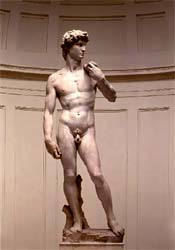PureX
Veteran Member
You're leaving out the context, and showing only the content. Why?doppelgänger said:How about this one?

From just the content, I would say this is a work of art. This is a specific selection of imagery based on the relationships they provide the artist for rendering them. For example, the sharp lines of the building on the left that lead the eye right to the center of the work like railroad tracks, juxtaposed with the freeform lines of the tree and vegetation on the right, and sitting in the middle is a building that is very symmetrical. and then the eye can "pass under" that building through the arch (pointing up) and then up to the tall structure behind. The arrangement of this overall image has a plan, a flow, and that flow corresponds to the different textures inferred by the lines and colors. There is a deliberateness to the way these harmonize that I believe is the result of a conscious intent on the part of the artist. This is not just an illustration, and it's not just decorative. There is a real exploration of shapes and texture and juxtapositions going on in this meant to take our eyes on a little journey.
Also, if it were an illustration, what would it be illustrating? What purpose could it serve as an illustration? The "kitchen" illustration could be from an old advertisement, or it could be an illustration from a story book, or from a home magazine. But if this work were an illustration, what would it illustrate? Archways? Trees? Towers?

